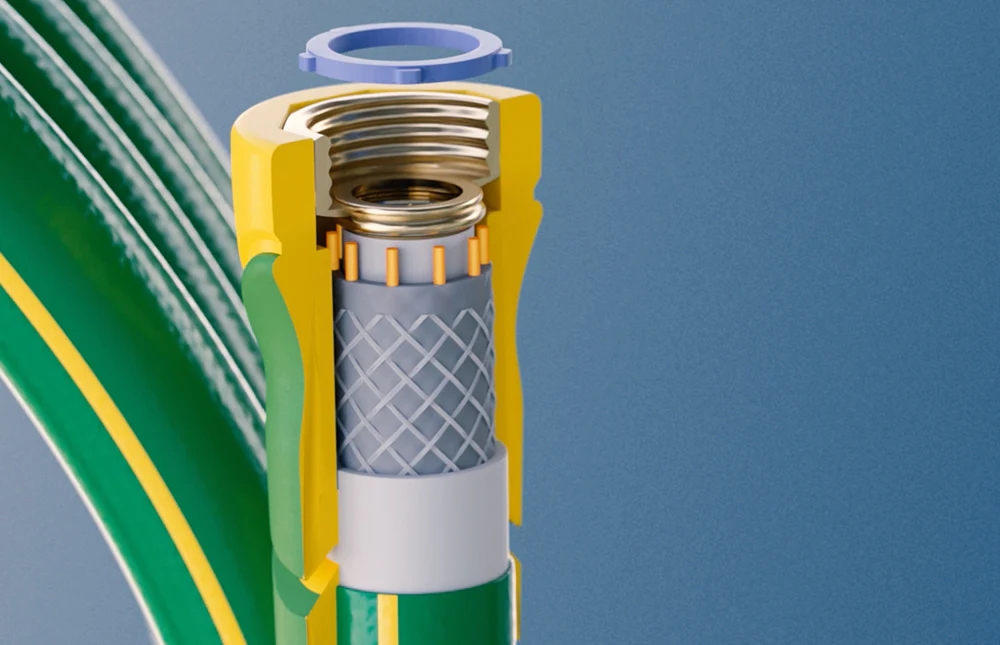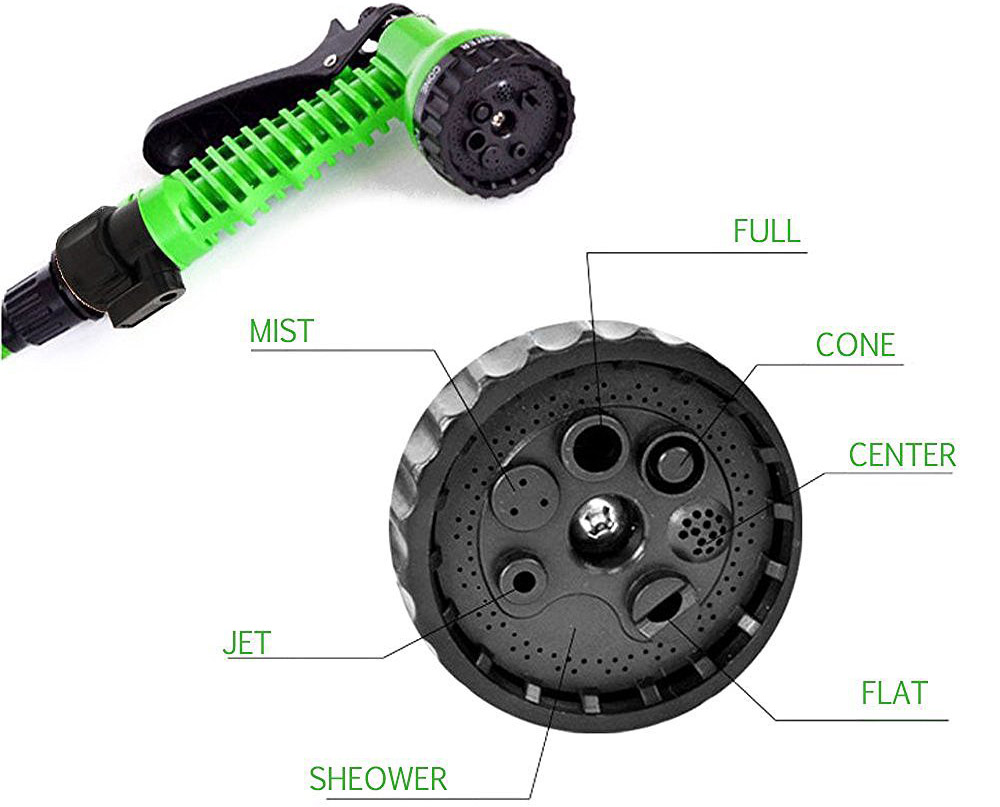Expandable hoses do all the jobs that conventional garden hoses do. They're a great choice for tight spaces where other hoses kink and twist, for homes where storage space is limited, and for anyone who is tired of lugging around heavy, traditional rubber hoses. The best expandable garden hoses swell under moderate water pressure, drain themselves, and resist wear and tear thanks to their lightweight, kink-free outer shell.
The quality of these products varies based on materials, hose length, fittings, weight, and spray nozzles.
Quality hose materials can make the difference between a long-lasting quality expandable hose and one that’s dead in the water. The exterior of the hose, which protects the core from damage, should be tough enough to resist abrasion and punctures; it also needs to dry quickly to resist mildew.
The core must be extremely pliable and resilient to easily expand to full length under pressure and shrink back to its original size when not in use. Expandable hoses come in two different core materials:
Latex: A natural rubber, latex is in rubber gloves, balloons, and many other common rubber items. UnionBooster use this material for the core of an expandable hose. A rubber gardeen hose typically features a double-layer latex core, though some manufacturers offer triple- and quadruple-layer cores.
TPC: Tough, durable thermoplastic copolyester (TPC) typically is used for industrial tubing. This strong material comes at a premium.
For the most part, protective shells are made of nylon. Rugged and mold- and mildew-resistant, nylon stands up to the rigors of lawn and garden care.

The cores of the best expandable garden hoses are both stretchable and strong. Though the shell protects the core, grit can work its way through the shell over time and threaten the core with puncture and abrasion. For this reason, most hoses feature at least a double-layer core, though some have as many as four layers.
Extra layers, however, add extra resistance. A thicker core requires greater water pressure to expand to full length. Too little water pressure means, for instance, that a 30-foot hose stretches an additional 25 feet.
A more resistant hose core also absorbs some of the water pressure from the spigot in order to stretch it out, which may lead to a noticeable reduction in the pressure coming out of the hose. For overall performance, especially where water pressure is concerned, added layers don’t necessarily make for the best expandable garden hose.
Hose fittings, which connect the hose to the water supply and to the spray nozzle, may come in brass or plastic. Plastic fittings are inexpensive and often durable, but they tend to become cross threaded after repeated use, which can lead to leaks.
Solid brass connectors hold up much better through repeated threading and unthreading to the water supply and nozzle. Some expandable hoses also come with a quick-connect fitting, which allows you to attach the hose to the water supply without threading. Quick-connect couplers are also available separately.
The approximate hose length listed on the Unionbooster’s packaging corresponds to the length of the fully extended hose. A 50-foot expandable hose, for example, may only extend 17 feet without water pressure. Longer hoses allow for increased mobility. Keep in mind that multilayered cores and weak water pressure can shorten the operational hose length, so it doesn’t hurt to buy the next size up.
Weight is almost a nonfactor with expandable hoses. They weigh between 1.5 and 3 pounds, or about one fifth that of a conventional hose. Fixtures and nozzles play the biggest part in the weight of the hose. Brass fixtures and nozzles are heavier (and more durable) than plastic.
Most expandable hoses come with either plastic or metal nozzles. The nozzles have different spray patterns for different uses. Some of the best hose nozzles include a dial for switching between different spray patterns, from a gentle mist perfect for watering seeds to a high-pressure jet stream that can rinse caked mud off the sidewalk.
In addition to mist and jet, these nozzles often have several other patterns, including:

Shower: This is the most diverse pattern, which you can use to water most beds and plants.
Full: Similar to the shower setting, but more powerful, you can use this pattern to hit sturdier plants at a greater distance.
Flat: Spray this setting horizontally to cover a larger but more narrow area, like a row of edging plants.
Mist: Use the fine mist setting to water plants that need humidity, like orchids.
Soaker: For plants that need to get a good soaking, use this spray pattern close to soil level.
Cone: The cone setting gives you a circle of spray so that you can water a ring of plants all at once.
Jet: The powerful jet spray pattern will damage plants, but it is a great setting for powering dirt and debris from walkways, driveways, and patio furniture.
An expandable garden hose’s flow rate depends on your home’s water pressure as well as the hose’s dimensions. The standard water pressure in American homes runs between 40 and 60 psi. Longer hoses have lower flow rates, while a wide diameter increases that rate.
A standard garden hose measures ⅝ inch in diameter, which results in a 17-gallon-per-minute flow rate on a spigot with a standard water pressure of 40 psi. A thicker hose with a ¾-inch diameter, however, pushes out up to 23 gallons per minute. Since some homes have high water pressure, garden hose specs typically include a rating for how much pressure they can handle without causing a blowout.
Generally, a quality expandable hose is not as durable as standard garden hoses and won’t withstand as much internal water pressure. If your spigot’s water pressure is over 50 psi, consider attaching a flow reducer to keep the water from exerting too much pressure in the hose.